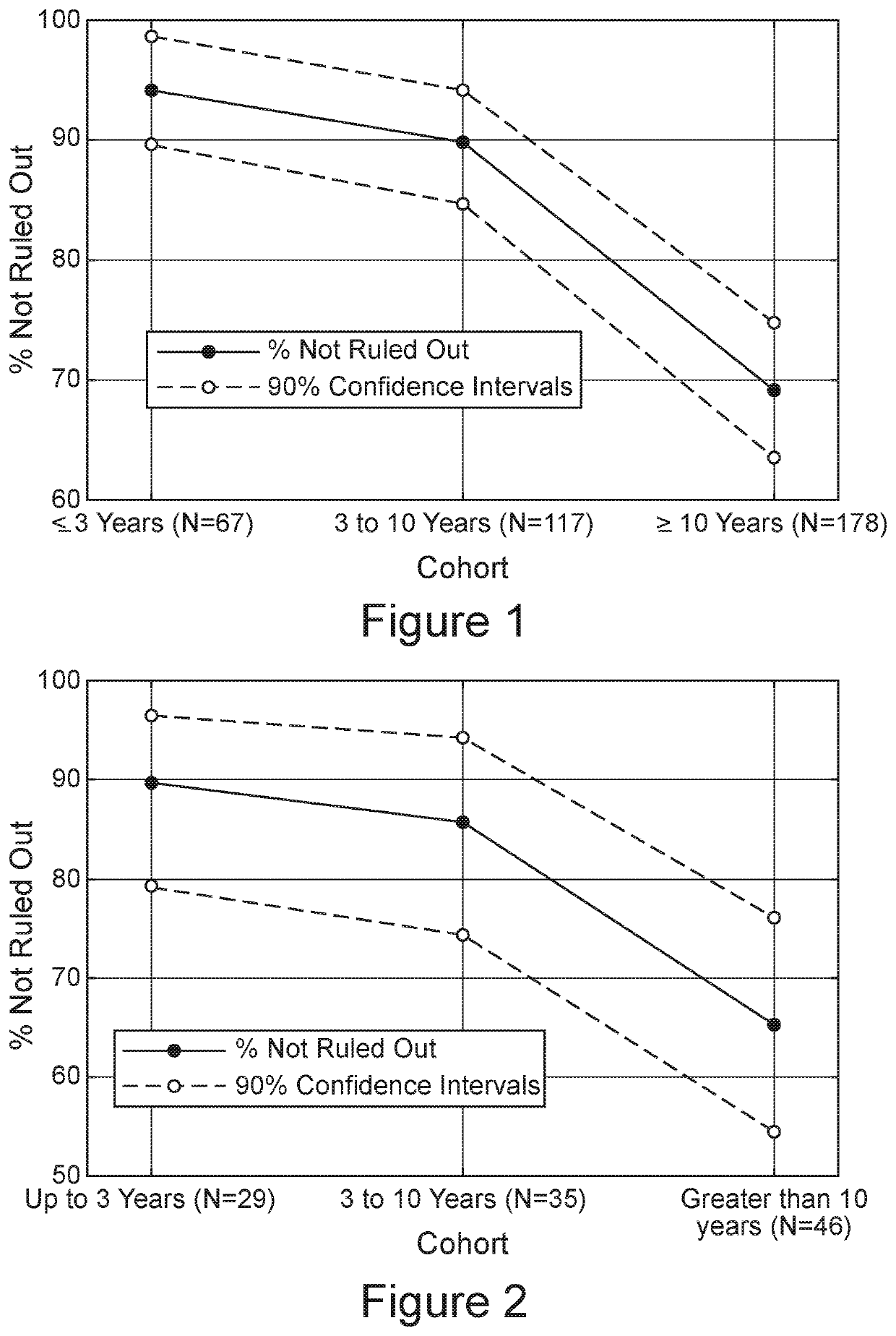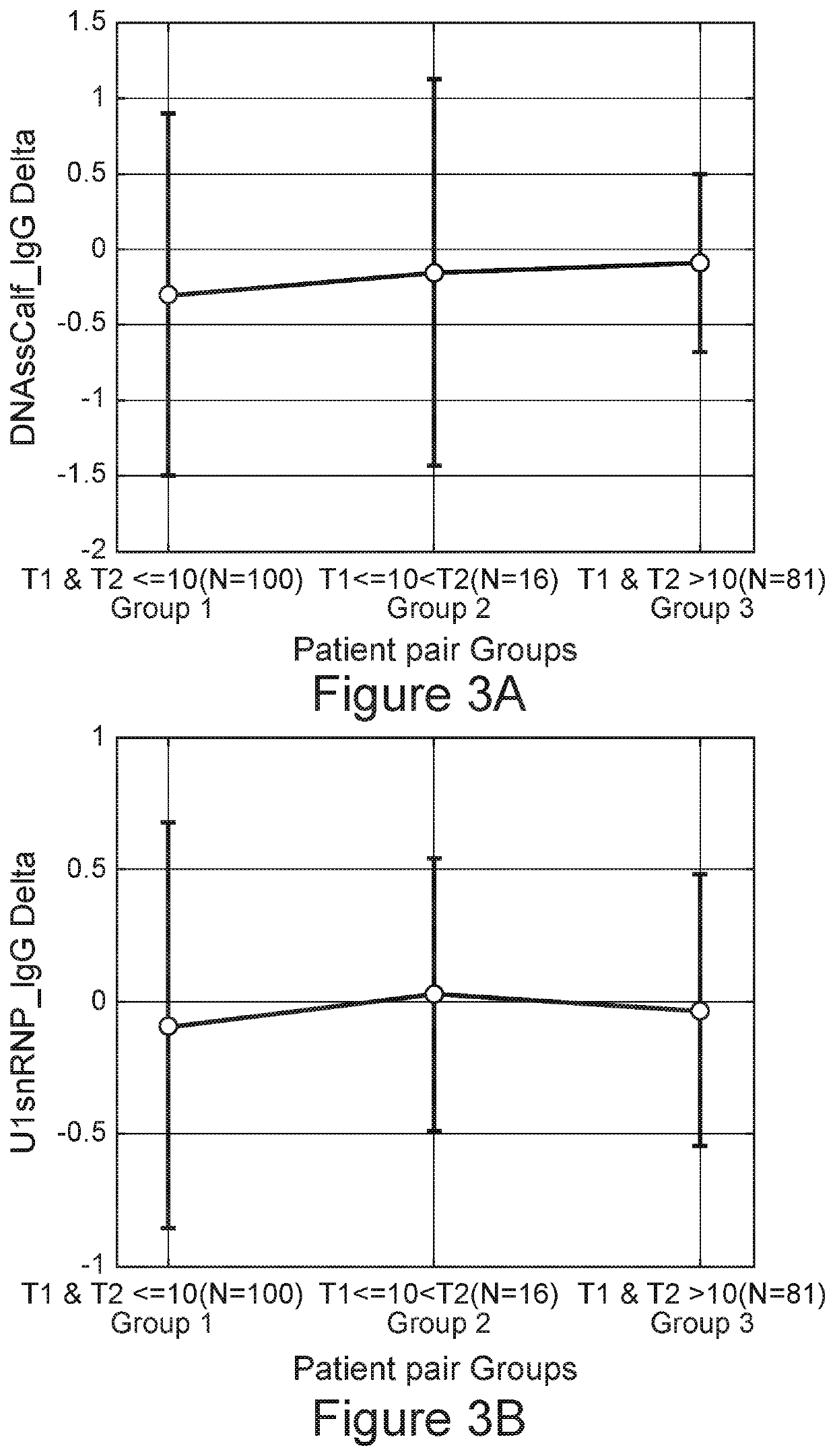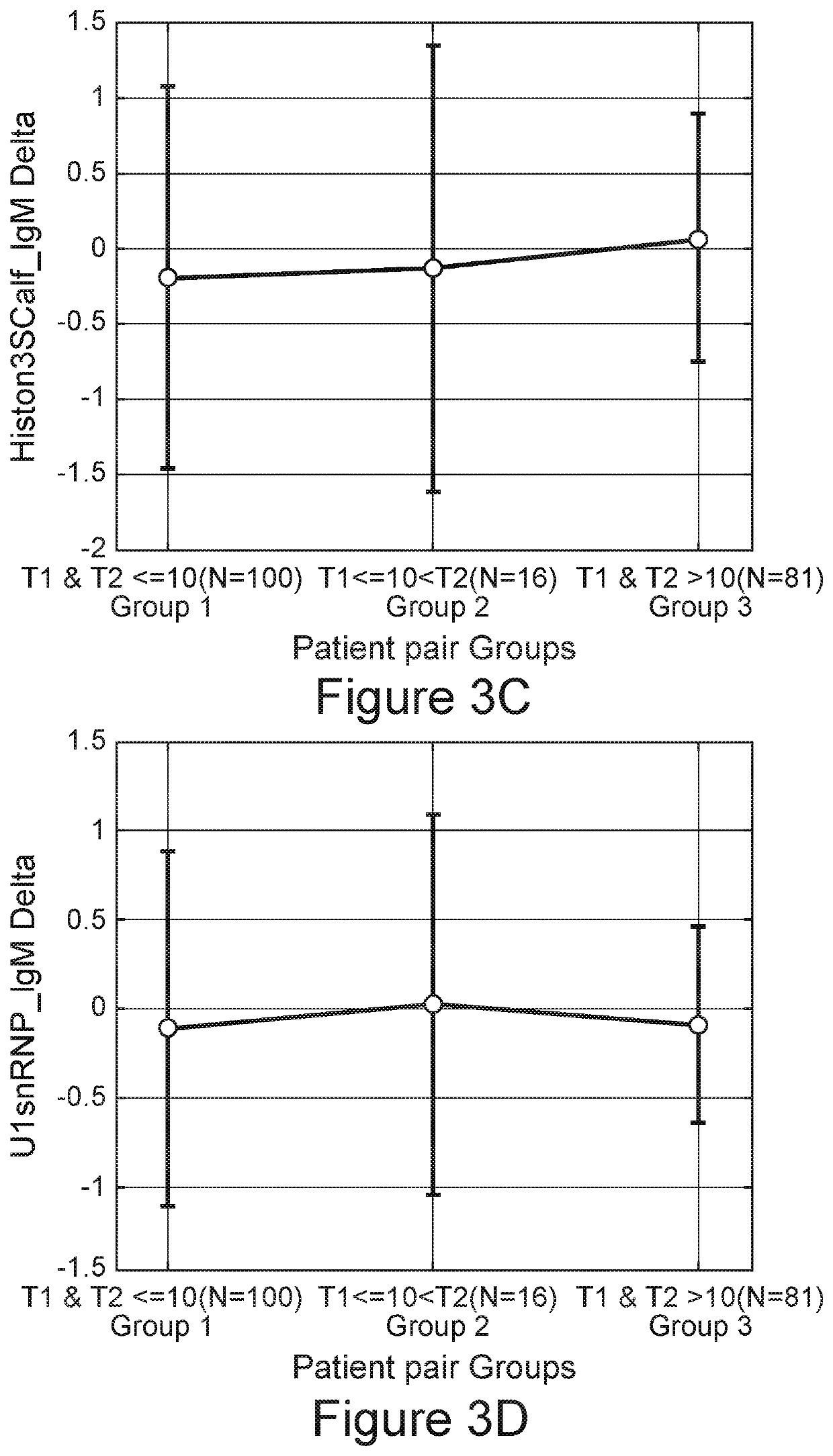Sle disease management
a technology for sle disease and diagnosis, applied in the field of systemic lupus erythematosus (sle) diagnosis and management, can solve the problems of insufficient efficacy, high risk of sle infection, and difficult and problematic diagnosis of sle, so as to improve serological activity, reduce corticosteroid use, and improve the effect of test scores
- Summary
- Abstract
- Description
- Claims
- Application Information
AI Technical Summary
Benefits of technology
Problems solved by technology
Method used
Image
Examples
example 1
[0264]The SLE test retains sensitivity up to 10 years from diagnosis of SLE.
[0265]To learn if the SLE test results are affected by the time elapsed since diagnosis, the percent of subjects positively identified by the SLE test (hereinafter designated “Not Ruled-Out”) were examined in three groups of SLE patient samples: those samples tested within 3 years of diagnosis (n=116); those tested between 3 and 10 years of diagnosis (n=117); and those tested at 10 years or thereafter (n=178) after diagnosis. FIG. 1 shows that at or above 3 years post diagnosis, 90% of the SLE patients were designated as Not Ruled-Out; this fraction of patients Not Ruled-Out is similar to what was observed with the original SLE test validation cohort. The percent of patients Not Ruled Out drops slightly from 3 to 10 years after diagnosis. Surprisingly, at 10 or more years after diagnosis, the fraction of those Not Ruled-Out decreased to about 69% (FIG. 1), a shift in the autoimmune signature suggesting that ...
example 2
[0269]The SLE signature is independent of disease activity as expressed by SLEDAI
[0270]SLEDAI scores were available for both the original validation cohort and the pairs cohort described above. In the case of asymptomatic (SLEDAI=0) patients, the sensitivity of the SLE test classifier as a function of time post disease diagnosis parallels the data from the full cohort. The three groups, shown in FIG. 2, contained somewhat fewer subjects (29, 35 and 46 each), but the results were essentially similar. Despite SLEDAI scores of 0, about 90% of the patients manifested a test designation of Not Ruled-Out at 3 years or between 3 and 10 years since diagnosis. Similar to the full cohort, the percent of subjects with designations of SLE Not Ruled-Out fell to about 65% after 10 or more years in the SLEDAI=0 subset of patients.
[0271]The results of the SLE test were not influenced by the SLEDAI score. During the first 10 years following diagnosis (see FIG. 1), when the SLE test successfully iden...
example 3
[0273]Reduction in the frequency of the Lupus Signature after 10 Years
[0274]The SLE signature was developed to distinguish between SLE patients and healthy individuals. Using the threshold established during the validation of the test, an increase in the frequency of SLE patients who are Ruled Out with the SLE test was surprisingly identified when more than 10 years have elapsed since diagnosis. Looking at the SLE score itself, a downward trend in the SLE score can be seen at greater times post diagnosis (FIG. 4). The mean numerical scores of 0.9 to 0.8 at 3 years and at 3-10 years correspondingly fell to a mean of less than 0.5 at 10 or more years (p=4.1E−10). Thus the increase in subjects developing a Ruled-Out designation was accompanied by a significant fall in mean numerical score. FIG. 4 shows the shift in numerical SLE signature scores in the patient subsets categorized according to the time since SLE diagnosis. The median numerical scores of 0.89 (IQR 0.51) and 0.83 (IQR 0.5...
PUM
| Property | Measurement | Unit |
|---|---|---|
| time | aaaaa | aaaaa |
| time | aaaaa | aaaaa |
| time | aaaaa | aaaaa |
Abstract
Description
Claims
Application Information
 Login to View More
Login to View More - R&D
- Intellectual Property
- Life Sciences
- Materials
- Tech Scout
- Unparalleled Data Quality
- Higher Quality Content
- 60% Fewer Hallucinations
Browse by: Latest US Patents, China's latest patents, Technical Efficacy Thesaurus, Application Domain, Technology Topic, Popular Technical Reports.
© 2025 PatSnap. All rights reserved.Legal|Privacy policy|Modern Slavery Act Transparency Statement|Sitemap|About US| Contact US: help@patsnap.com



